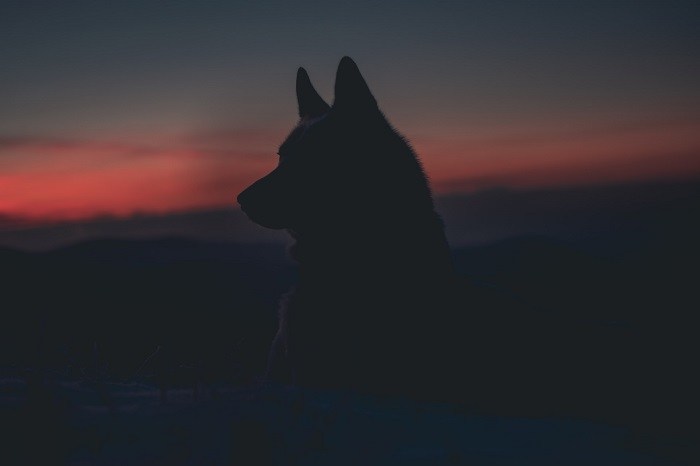The year 2021 was dubbed the “definitive comeback of the wolf” by the Flemish infocentre for agriculture and horticulture (VILT), which closely monitored how the animal’s return affected the agricultural sector in particular.
The protected species has made a return in Belgium and in other parts of Europe – a comeback welcomed by conservationists but rued by keepers of livestock, from the owners of thoroughbred horses concerned about losing prized assets to farmers fighting for scarce subsidies for wolf-proof fencing.
Some families in rural areas are even worried for their children’s safety after 15 deer were killed by wolves in the fenced-in meadow of a popular family resort, where the deer were kept for visitors to observe.
“Here in the forests and fields where we live, people have mixed feelings about the wolves,” farmer Thomas Linssen told a crowd of around 3,000 people who took part in a torchlit march held in the province of Limburg in protest of the wolf’s increasing presence.
“I think most of you are here out of legitimate concern: children are scared, grandparents, mothers and even fathers are scared. Fear created by the images of dead pets and dead cattle.”
A rise in wolf attacks on livestock
The wolf species officially made its comeback in Flanders in 2018, but numbers have been difficult to track at times. With just two wolves confirmed in 2019, this rose to four in 2020 and nine in 2021. However, there are also a number of wandering wolves which spend time in the Netherlands and in Germany.
Fatal attacks on farm animals also rose over the last three years, from 51 in 2019 to 108 in 2020 and 117 in the first ten months of 2021.
Figures also show an increase in attacks on larger farm animals: in the first 10 months of 2021, five cattle were victims of an attack by the wolf, compared to one in 2020.
“And what if the small livestock are brought inside by their owners out of fear and the wolves increase in numbers? Then they get hungry and will attack cows more often,” farmer Cyriel Geusens told VILT.
“On top of that, the wolves also become more experienced in attacking cattle over the years.”
Anti-wolf actions
Geusens participated in an anti-wolf action last autumn that posted gruesome images of wolf attacks on animals along a cycling route.
“The municipality wants the signs to be taken down because the images would be shocking for children,” Geusens said, “but this is simply a depiction of reality.”
He said the critical response to the signage is symbolic of the government's lax approach to the return of the species, which they portray as a victory for nature. “By banning these images, the image of gentle animals is perpetuated,” said Geusens.
Related News
- Budget for wolf-proof fencing skyrockets by ten times
- Flood of requests for wolf-proof fences
- More wolf sightings and more dead livestock north of Antwerp
“The other day I was checking the meadows on my bicycle and suddenly a wolf jumped out of the corn onto the road and stared at me for several minutes. That is not normal behaviour for a wild animal that is supposed to run away. The wolves are getting bolder and are no longer afraid of humans.”
Geusens doesn’t see the increasing number of wolves in Belgium as a positive development, as species conservationists do.
“Maybe the wolf can thrive in large nature areas in Poland and Germany. Here, the area is much too densely populated and man and wolf will soon be in each other's way.”

